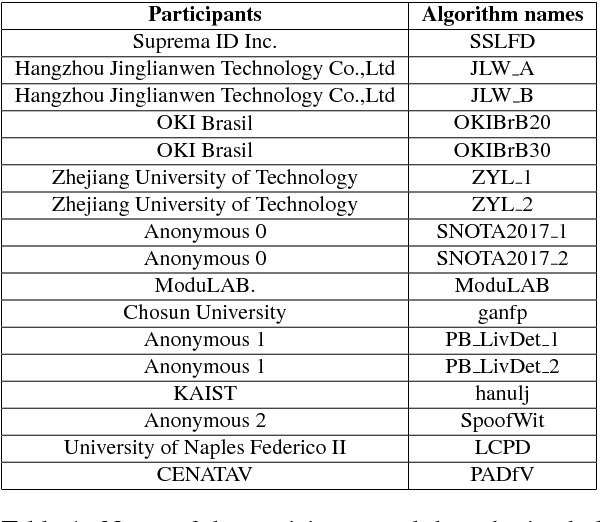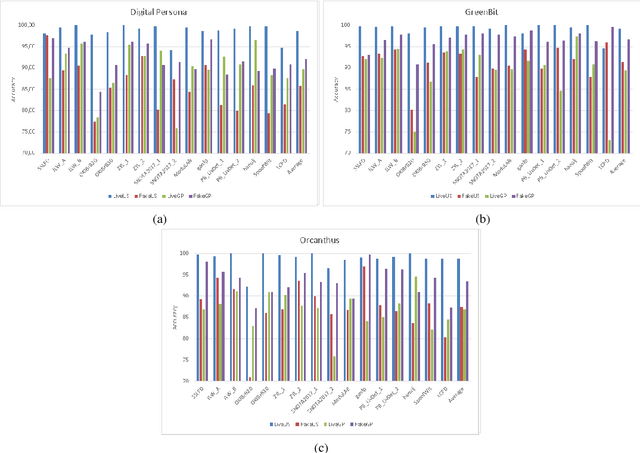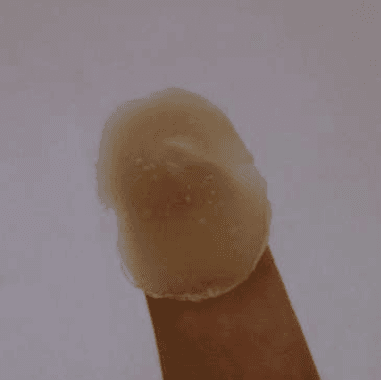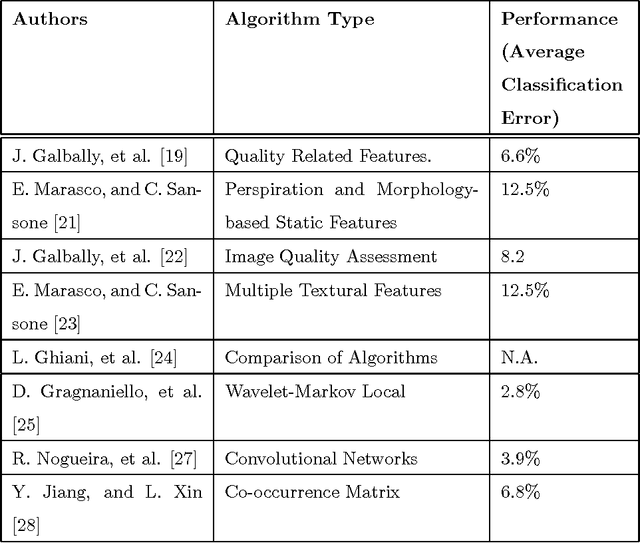Valerio Mura
LivDet 2017 Fingerprint Liveness Detection Competition 2017
Mar 14, 2018



Abstract:Fingerprint Presentation Attack Detection (FPAD) deals with distinguishing images coming from artificial replicas of the fingerprint characteristic, made up of materials like silicone, gelatine or latex, and images coming from alive fingerprints. Images are captured by modern scanners, typically relying on solid-state or optical technologies. Since from 2009, the Fingerprint Liveness Detection Competition (LivDet) aims to assess the performance of the state-of-the-art algorithms according to a rigorous experimental protocol and, at the same time, a simple overview of the basic achievements. The competition is open to all academics research centers and all companies that work in this field. The positive, increasing trend of the participants number, which supports the success of this initiative, is confirmed even this year: 17 algorithms were submitted to the competition, with a larger involvement of companies and academies. This means that the topic is relevant for both sides, and points out that a lot of work must be done in terms of fundamental and applied research.
Review of the Fingerprint Liveness Detection competition series: 2009 to 2015
Sep 06, 2016



Abstract:A spoof attack, a subset of presentation attacks, is the use of an artificial replica of a biometric in an attempt to circumvent a biometric sensor. Liveness detection, or presentation attack detection, distinguishes between live and fake biometric traits and is based on the principle that additional information can be garnered above and beyond the data procured by a standard authentication system to determine if a biometric measure is authentic. The goals for the Liveness Detection (LivDet) competitions are to compare software-based fingerprint liveness detection and artifact detection algorithms (Part 1), as well as fingerprint systems which incorporate liveness detection or artifact detection capabilities (Part 2), using a standardized testing protocol and large quantities of spoof and live tests. The competitions are open to all academic and industrial institutions which have a solution for either softwarebased or system-based fingerprint liveness detection. The LivDet competitions have been hosted in 2009, 2011, 2013 and 2015 and have shown themselves to provide a crucial look at the current state of the art in liveness detection schemes. There has been a noticeable increase in the number of participants in LivDet competitions as well as a noticeable decrease in error rates across competitions. Participants have grown from four to the most recent thirteen submissions for Fingerprint Part 1. Fingerprints Part 2 has held steady at two submissions each competition in 2011 and 2013 and only one for the 2015 edition. The continuous increase of competitors demonstrates a growing interest in the topic.
 Add to Chrome
Add to Chrome Add to Firefox
Add to Firefox Add to Edge
Add to Edge